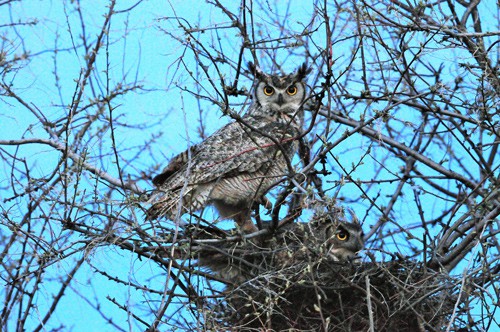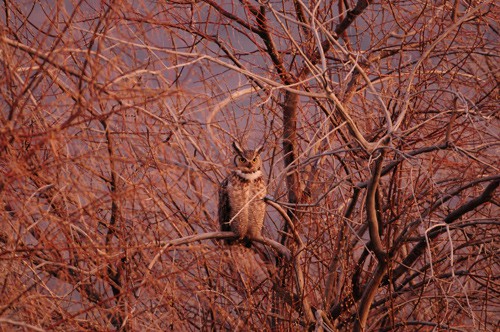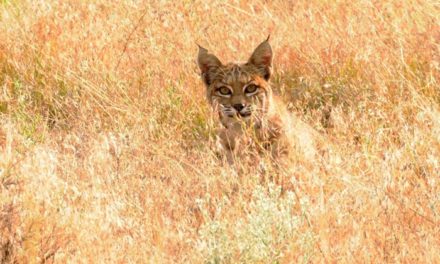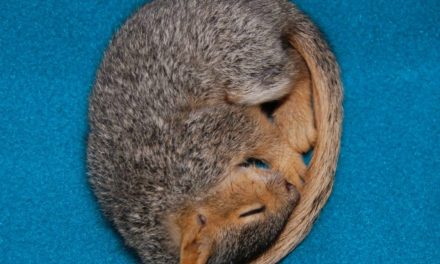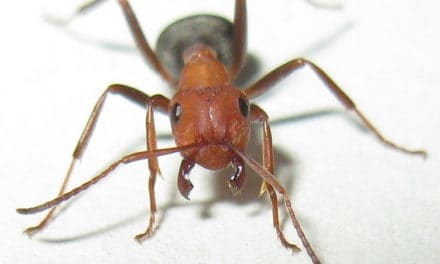Photos and Articles by Jan Ramelli
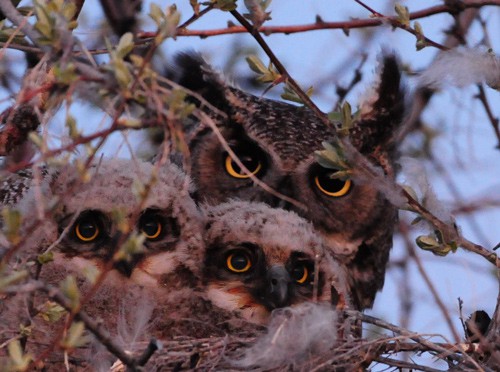
This beautiful bird is more common in our area than one might think. Once you begin to look for the signs they will pop out at you often.
A friend of mine, Paul Whitcome, told me about this particular nest and I began to photograph it at least weekly! It has been a wonderful experience to get up before dawn so that I can be ready for them to return to their nest and watch the male and female raise their two owlets.
In the winter and early spring, before the trees began to leaf out, look for large nests in trees. The Great Horned Owl will lay their 2-3 white eggs on a cliff or cave, even on the ground; but, where you will find them is high in a tree in a stick nest that they have “borrowed” from a hawk, heron, or raven.
They lay their eggs in the dead of winter and the incubation period averages 33 days. At about 6 weeks they begin to move to nearby branches and begin to fly shortly after that!
Leaving the nest depends greatly upon the abundance of food, however, they will become completely independent by fall when their parents courting behavior begins again!
It has warmed my heart to watch these two GHO’s and the affection and team work that they have displayed. Each of the owlets look different and have little behaviors of their own. As I write this article, they are 6 weeks old and I know that my morning visits will soon be greeted with an empty nest while they learn their survival skills and hunt with their parents. I am thankful for this opportunity and hope to see them again next year!

